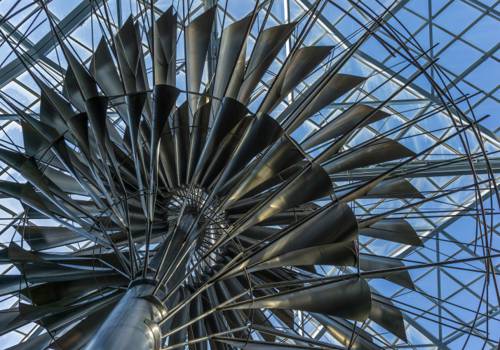
FAQ About Cultural Significance of Outdoor Public Art Installations

What is outdoor public art?
Outdoor public art refers to artworks located in outdoor spaces that are accessible to the public. These installations can include sculptures, murals, performances, and other artistic expressions that engage passersby and are often integrated into urban or natural environments.

How do outdoor art installations engage communities?
Outdoor art installations engage communities by transforming public spaces into interactive environments, encouraging social interaction, cultural dialogue, and community pride. These installations often invite people to participate in or reflect on shared experiences and societal issues.

What cultural expressions are commonly seen in outdoor public art?
Outdoor public art often reflects cultural expressions such as historical narratives, local traditions, social justice themes, and community values. Artists may use their work to comment on societal issues or celebrate the unique identity of the community where the art is located.

Why are outdoor public art installations important in urban environments?
Outdoor public art installations are important in urban environments because they beautify public spaces, promote cultural tourism, foster community identity, and can be an economic asset by attracting visitors and enhancing the vibrancy of urban areas.

Can outdoor public art installations have an economic impact?
Yes, outdoor public art installations can have a significant economic impact by boosting local businesses, attracting tourists, and increasing property values. They can also generate jobs both in the creation of art and in associated sectors such as tourism and hospitality.

What challenges do outdoor public art installations face?
Outdoor public art installations face challenges such as weather damage, vandalism, funding limitations, and the need for regular maintenance. Artists and communities must also navigate approval processes and site selection to ensure the art is appropriately situated and supported.

How do outdoor public art installations promote cultural dialogue?
Outdoor public art installations promote cultural dialogue by providing a visual platform for communities to explore, question, and discuss various cultural narratives and issues. They can address social topics, represent diverse voices, and encourage reflection and conversation about shared cultural histories and future directions.

Are there famous examples of outdoor public art installations?
Yes, there are several famous examples of outdoor public art installations such as Christo and Jeanne-Claude's The Gates in Central Park, New York City, and Anish Kapoor's Cloud Gate in Chicago's Millennium Park. These installations have captivated audiences worldwide and are celebrated for their scale and cultural impact.

How do artists typically get funding for outdoor public art installations?
Artists typically secure funding for outdoor public art installations through grants, sponsorships, crowdfunding, public art commissions, and partnerships with governmental or private organizations. Funding can vary widely depending on the project's scope and location.

Can outdoor public art installations be temporary?
Yes, outdoor public art installations can be temporary. Many installations are designed as temporary exhibits to coincide with cultural events or to prompt timely conversations. These temporary works can offer a dynamic and evolving experience of public space.

What role do outdoor public art installations play in cultural tourism?
Outdoor public art installations play a significant role in cultural tourism by creating iconic landmarks that attract visitors and enhance cultural experiences. Well-known installations often become must-see attractions, contributing to the cultural reputation and economic vitality of their locations.

How does outdoor public art reflect local history or culture?
Outdoor public art reflects local history or culture by incorporating historical themes, local materials, and cultural motifs that resonate with the community. These works can memorialize important events, celebrate local heroes, or highlight cultural traditions that are significant to the area's identity.

Are there specific materials commonly used in outdoor public art installations?
Materials commonly used in outdoor public art installations include metal, stone, wood, glass, and durable synthetic materials. Artists often choose materials that can withstand weather conditions while allowing for creative expression and alignment with the artwork's thematic intent.

How do outdoor public art installations enhance urban planning?
Outdoor public art installations enhance urban planning by enriching public spaces, creating landmarks, and improving urban aesthetics. They can be integrated into city planning efforts to increase pedestrian engagement, promote social inclusivity, and support community-oriented goals.

Can outdoor public art installations change perceptions of a space?
Yes, outdoor public art installations can change perceptions of a space by transforming underutilized or neglected areas into vibrant cultural destinations. Art can redefine how people see and use a space, often leading to increased community engagement and a renewed sense of pride and ownership.

What permits are typically required for outdoor public art installations?
Permits required for outdoor public art installations typically include zoning approval, public safety and liability permissions, and sometimes historical preservation approvals if the site is of historical significance. The process can vary depending on local regulations and the project's nature.

Who typically maintains outdoor public art installations?
Maintenance of outdoor public art installations is typically managed by the commissioning body, which could be a local government, an arts organization, or a community group. These entities are responsible for ensuring the artwork is preserved and safe for public interaction.

What is the role of technology in outdoor public art installations?
Technology plays a growing role in outdoor public art installations through interactive elements, digital components, or augmented reality. These technologies can enhance engagement and create immersive experiences, expanding the possibilities for artistic expression and audience interaction.

How do communities typically respond to new outdoor public art installations?
Community responses to new outdoor public art installations can vary widely, from overwhelming support to controversy and criticism. Successful installations often engage the community early in the process, considering public input and fostering a sense of shared ownership and pride.

What environmental considerations are important for outdoor public art?
When creating outdoor public art, environmental considerations include selecting sustainable materials, minimizing ecological disruption during installation, and ensuring the work is resilient to climate conditions. Artists often collaborate with environmental experts to balance artistic goals with ecological responsibility.
